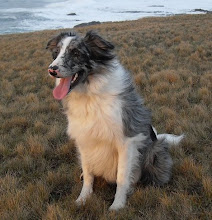Friday, 23 December 2011
Thinking of Warmer Climes
Sunday, 18 December 2011
ZANZIBAR

Wednesday, 14 December 2011
"**** the Pratt"


Tuesday, 21 December 2010

Living here on Orkney we do not seem to get extremes of temp (well certainly not highs anyway). At 59 degrees North we're only about 50 miles further South than Greenland is, but due to the sea and the 'gulf stream' its not as cold as it really should be otherwise. In winter we often do get freezing temp's but the last couple of days at -4 or -5 C daytime temp, without windchill, and nearly a foot of snow have been a bit testing.
So I went on Flickr and found a nice picture to use from the comfort of my home. Near where we live are two large lochs seperated at one point by a thin finger of land called the "Ness of Brodgar". At the end of the Ness is a short causeway seperating the two lochs. All shown here with salt water Stennes Loch on the left and the fresh water Harray Loch on the right.

The whole area shown is part of a World Heritage Site, all of which is stuffed full of Neolithic (stone age farmers) archaeology. The standing stone shown here (the Watchstone, 5.6 m high) stands between two stone circles. As ever undertaken in my constant favorite the drafting pen.
The original can be seen on Flickr, from a very active Orkney photographer, Orquil (cannot seem to be able to post the address -sorry)
Monday, 13 September 2010
Bobby the Seal

So what were they up to?
a) Rocking about in the swell fully or half asleep?
b) Some normal seal behaviour I've not noticed before (I'm no expert)?
c) Just messing with my head? - my favorite option.
Sunday, 12 September 2010
Please (don't) "Mind the Gap"
So time to start again. Having just been off the island for a couple of weeks doing survey work in Aberdeenshire (looking for a couple of 17th Century formal gardens) I give you a small corner of Castle Fraser, the first of two sites we worked on.
 It was very nice, but equipment failures and poor results took the shine off a little bit. Unfortunately this was Sue's first contract as a self employed consultant. However, when the site was excavated the following week the poor results where explained - the gardens had been largely removed in the 1800's as part of landscaping for a "natural" parkland as was then the fashion. The actual castle can be seen below with Sue taking her turn at surveying, less a castle and more a fortified home, very like a French Chateau (turrets and conical tiling). All Scottish Baronial Gothic.
It was very nice, but equipment failures and poor results took the shine off a little bit. Unfortunately this was Sue's first contract as a self employed consultant. However, when the site was excavated the following week the poor results where explained - the gardens had been largely removed in the 1800's as part of landscaping for a "natural" parkland as was then the fashion. The actual castle can be seen below with Sue taking her turn at surveying, less a castle and more a fortified home, very like a French Chateau (turrets and conical tiling). All Scottish Baronial Gothic.
The following week was Fyvie Castle, much much grander and very nice and good results. They start digging there in about a weeks time, so "fingers crossed" that the results really have shown the gardens (and other features). Both properties belong to the National Trust for Scotland.
Wednesday, 14 July 2010
A Harness of Gradiometers


The one we preferred was the original, a hard alloy frame looking like roman armour over your shoulders -otherwise referred to as the "Xena" harness (detail below).






